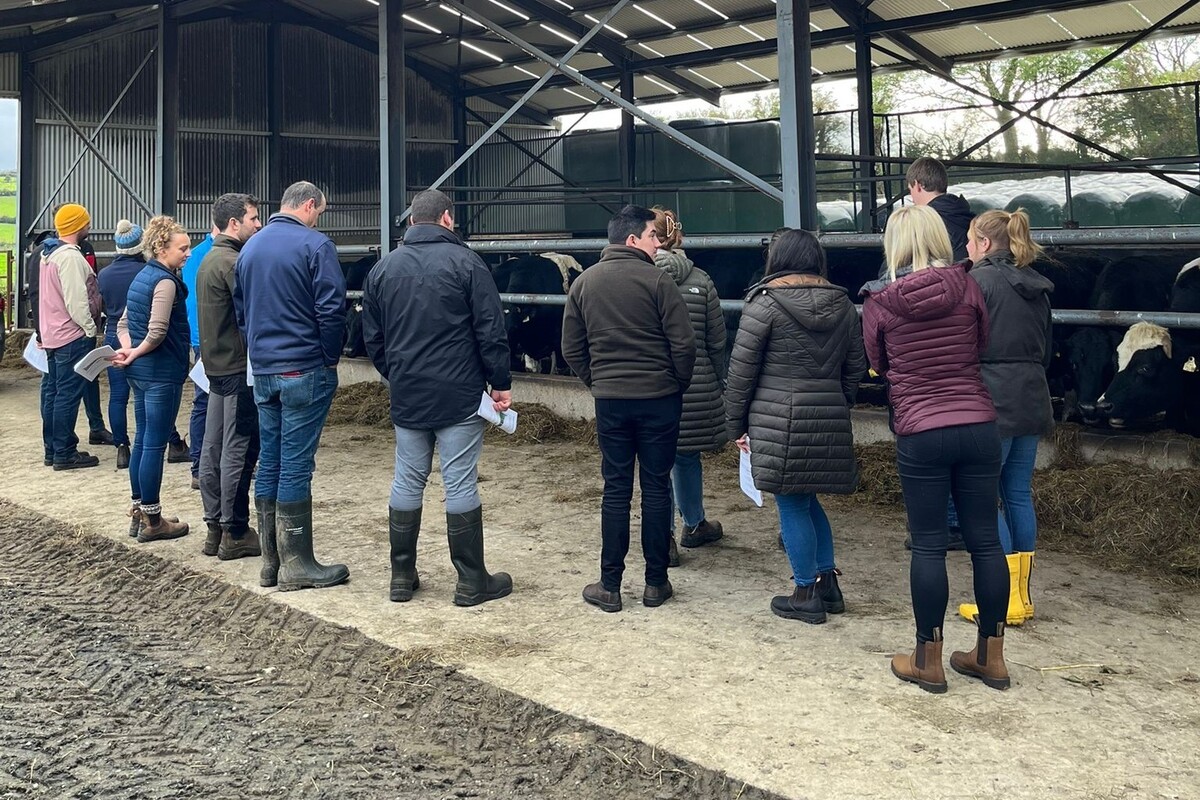The first stop for the group in Dublin was the Irish Farmers Association (IFA), Ireland’s largest farming representative organisation representing Irish farmers at home and in Europe.
The group spent the morning with the Director General, Damian McDonald and Director of Governance and Oireachtas Engagement, Elaine Farrell learning more about the structure of agriculture in Ireland and a wide range of topics including future farm support, water quality and bovine TB. With an election expected imminently in Ireland, the importance of the farming voice in political debate was also an area of discussion.
Bord Bia - The Irish Food Board
The next stop was Bord Bia – Irish Food Board. The group met with John Murray, Director of Meat, Food & Beverages where he explained that Bord Bia's role is to market and promote Irish food, drink and horticulture to customers worldwide on the basis of sustainability, traceability and quality.
John Murray gave an overview of Origin Green (the Irish farm assurance scheme) and some of the other quality assurance schemes Bord Bia run which span the supply chain from farm to fork. He highlighted that the aim of all their assurance schemes is to evidence the standards Irish food and drink is produced to, with the aim of positioning themselves as the number one sustainable choice for consumers around the world.

Day two
On day two, the group visited Larry Hannon’s dairy farm near Co. Kildare. Larry gave an overview of his grass-based system, milking 220 dairy cows and explained that the average production from the herd is 530kg of milk solids with a fat content of 4.30%, a protein content of 3.50% and a cell count of less than 130,000 cells/ml. Larry explained how the farm is about 10 years into the drive of high economic breeding index (EBI), fertility and solids. For Larry, NVZ regulations were a huge concern, he explained how he has taken on more land with a view to reducing his nitrogen loading and stressed to the group that investment in more slurry storage was key to allowing him to better time manage his manures.
Larry said that milk recording has been taking place on the farm for 50 plus years and is an essential tool for making breeding decisions, achieving low cell counts and ultimately producing a more profitable animal.
The next stop was Teagasc – the Agriculture and Food Development Authority – the national body providing integrated research, advisory and training services to the agriculture and food industry and rural communities. The group met with Dr Siobhan Kavanagh, Signpost Programme Communications and Engagement Specialist who gave a general overview of Teagasc and the Signpost Programme.
The group learnt that the Signpost Programme is a free programme available to all farmers which builds on the network of over 120 Signpost demonstration farms. It does this by providing enhanced advisory and training support to farmers to help them to select and implement climate and sustainability actions that are appropriate and impactful on their farms.

Day two concluded with a visit to Shane Cranny, who operates a dairy calf to beef operation in Myshall, Co. Carlow, where 100 autumn-born
Holstein Friesian male calves are purchased. Shane explained that back in 2018 he transitioned away from a spring-born calf system to an autumn system to maximise both the use of the housing facilities present on farm and the proportion of carcass gain achieved from grazed grass.
The group learnt that animal performance is an area where Shane has really excelled, with 330-340kg carcasses being achieved at 24 months. Shane explained that this is being gained through a stringent focus on calf sourcing and rearing, animal health and grassland management.
Day three
On the third and final day the group visited Thomas O’Connor’s mixed farm near the village of Moone in South Kildare. A truly mixed farm with four enterprises on the farm comprising beef, sheep, tillage, and renewable energy. The beef enterprise comprises of 800 cattle. Each year 200
additional cattle are purchased for finishing comprising both young bulls and heifers.
Thomas, as the only full-time worker on the farm, highlighted the importance of keeping it simple and showed the group the various on farm trials he is doing around forage and increasing protein content in the ration.

What the group learnt
NFU Cymru Next Generation Group member Neil Davies said: “It is clear that there is a lot of common ground between farmers in Wales and Ireland. It was interesting to hear that they face many of the same issues, such as NVZs, as we do here in Wales. It was eye opening to see the sheer scale of the work Bord Bia is undertaking to promote and market Irish food and drink abroad, alongside working with industry to evidence the good work of farmers.”
Richard Jones, Next Generation Group member said: “The unique feature of Thomas’ farm is the way they paddock graze the cattle in large groups during the grazing season. Grassland management is excellent with all the farm laid out in 2 ha paddocks, with the provision for subdivision of all paddocks.”
In conclusion, NFU Cymru Next Generation Group member Bryony Gittins said: “We had a great three days in Ireland, huge thanks to the IFA, Teagasc, Bord Bia and the three farms we visited for the hospitality and insight they shared. With so many similar issues and such similar
farming systems, we learnt a huge amount about how the Irish agriculture industry is working together to tackle the various challenges it faces and to make the most of opportunities. It was also fantastic to spend some time together as group, learning from each other and working out how we can put our newly found knowledge into practise back home in Wales.”
